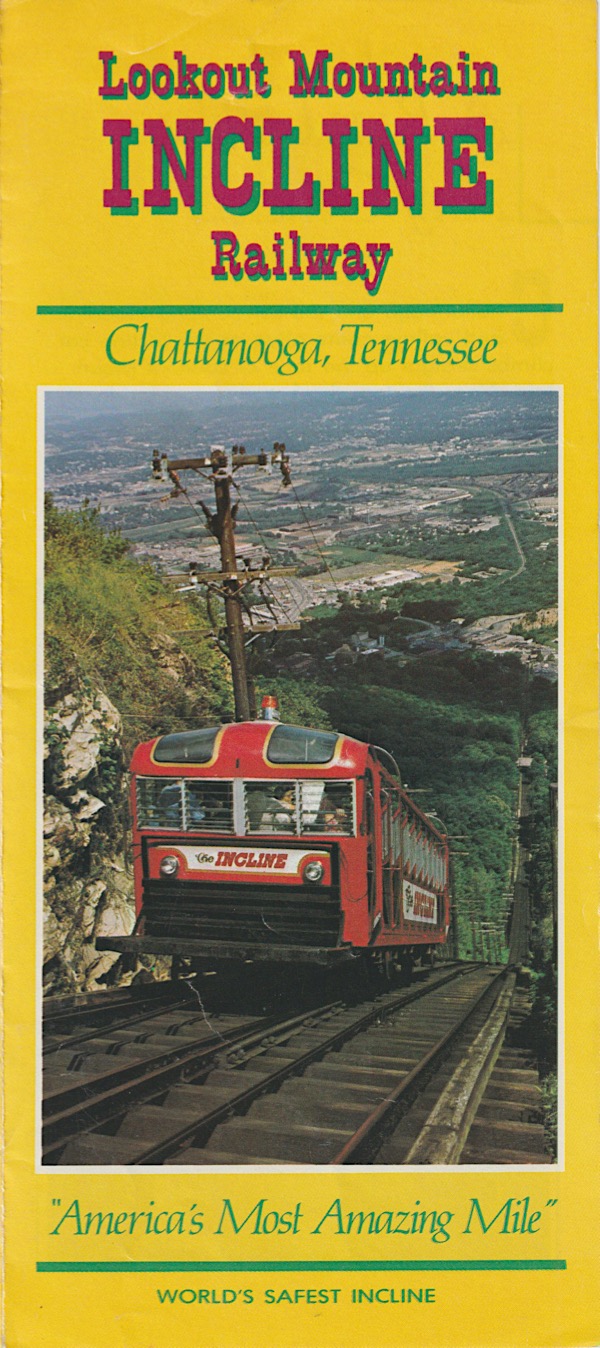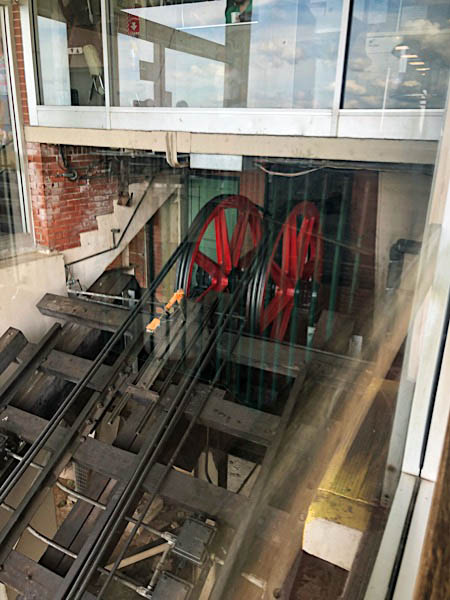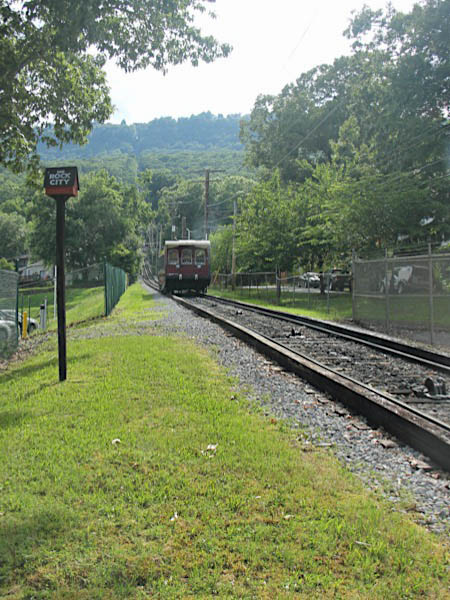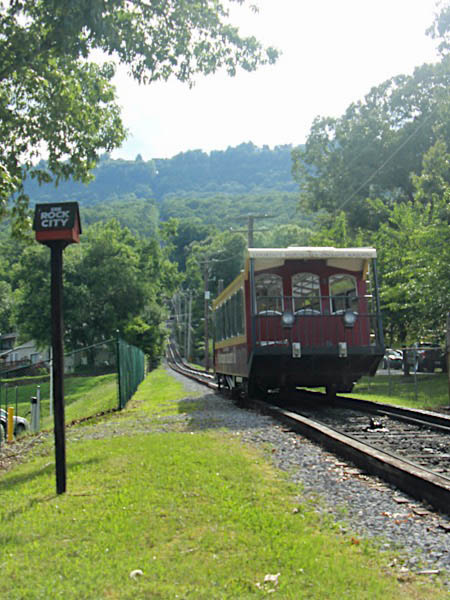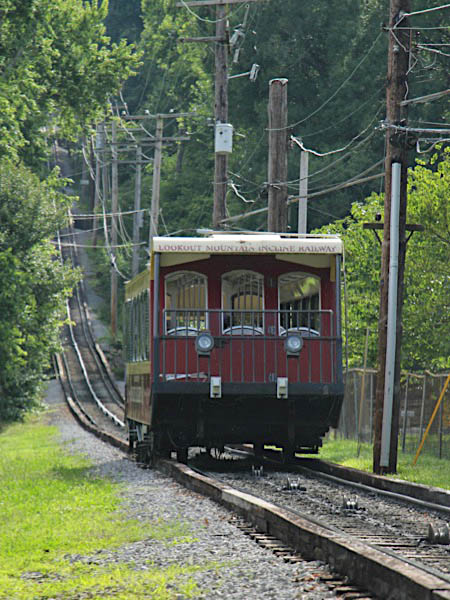







Lookout Mountain Incline Railway"America's Most Amazing Mile" |

Lookout Mountain, Tn / Jun 2019 / RWH

 uring the railroad boom of the 1880's, speculators decided to develop a hotel on the mountaintop serviced by a narrow gauge railroad that would run up the mountain. A second, broad-gauge line and an earlier incline were also competing for passengers. On November 16, 1895 the railroad known today simply as "The Incline" opened, rising up the steepest part of Lookout Mountain. Built by John Crass and the Lookout Mountain Incline Railway Company this technical marvel boasted an incline of 72.7% at one point, making it the steepest passenger Incline in the world. By 1900 the success of this railway closed down all of its competitors.
uring the railroad boom of the 1880's, speculators decided to develop a hotel on the mountaintop serviced by a narrow gauge railroad that would run up the mountain. A second, broad-gauge line and an earlier incline were also competing for passengers. On November 16, 1895 the railroad known today simply as "The Incline" opened, rising up the steepest part of Lookout Mountain. Built by John Crass and the Lookout Mountain Incline Railway Company this technical marvel boasted an incline of 72.7% at one point, making it the steepest passenger Incline in the world. By 1900 the success of this railway closed down all of its competitors.
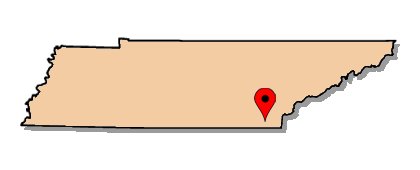
 he Lookout Mountain Incline Railway operates electrically-powered cable-drawn railcars from the Chattanooga, Tennessee, neighborhood of St. Elmo, at the base of the mountain, up to the summit. Dubbed "America's most amazing mile," this modern incline is the successor to the second original incline installed up the mountain, in 1895. The cars of this original operation were operated by coal-burning steam engines, but were upgraded to two 100-horsepower electric motors in 1911. The railway is now operated by the Chattanooga Area Regional Transportation Authority, the area's public transit agency. Two cars operate regularly throughout the day, counterbalanced on a propulsion cable system as they travel from lower to upper stations, and vice versa. The Incline’s home, Lookout Mountain, played a pivotal role in the American Civil War. Union forces suffered one of their greatest defeats by Confederates in the shadow of Lookout Mountain at Chickamauga, GA.
he Lookout Mountain Incline Railway operates electrically-powered cable-drawn railcars from the Chattanooga, Tennessee, neighborhood of St. Elmo, at the base of the mountain, up to the summit. Dubbed "America's most amazing mile," this modern incline is the successor to the second original incline installed up the mountain, in 1895. The cars of this original operation were operated by coal-burning steam engines, but were upgraded to two 100-horsepower electric motors in 1911. The railway is now operated by the Chattanooga Area Regional Transportation Authority, the area's public transit agency. Two cars operate regularly throughout the day, counterbalanced on a propulsion cable system as they travel from lower to upper stations, and vice versa. The Incline’s home, Lookout Mountain, played a pivotal role in the American Civil War. Union forces suffered one of their greatest defeats by Confederates in the shadow of Lookout Mountain at Chickamauga, GA.

Click to see Lookout Mountain Incline station plotted on a Google Maps page

2019 brochure / collection
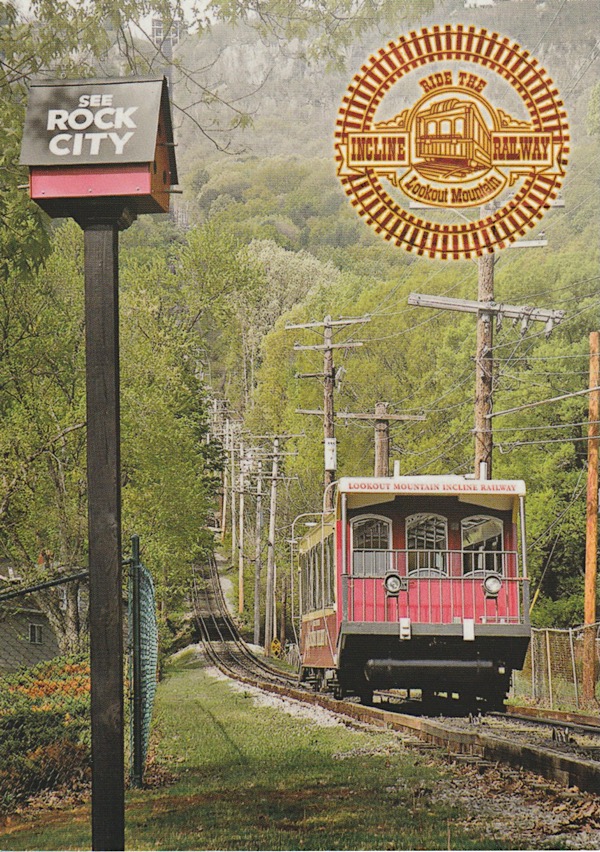
postcard / collection


postcard / collection
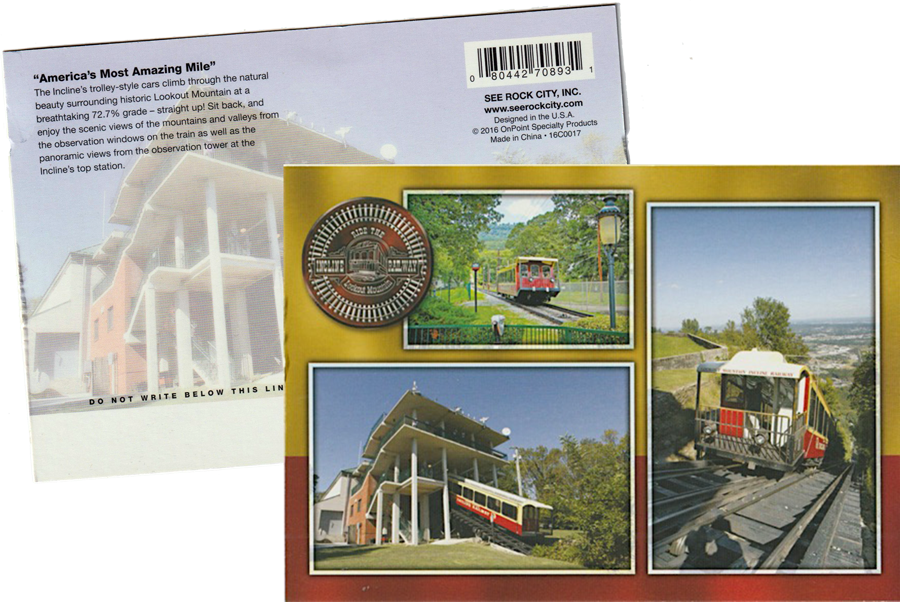
postcard / collection
Equipment
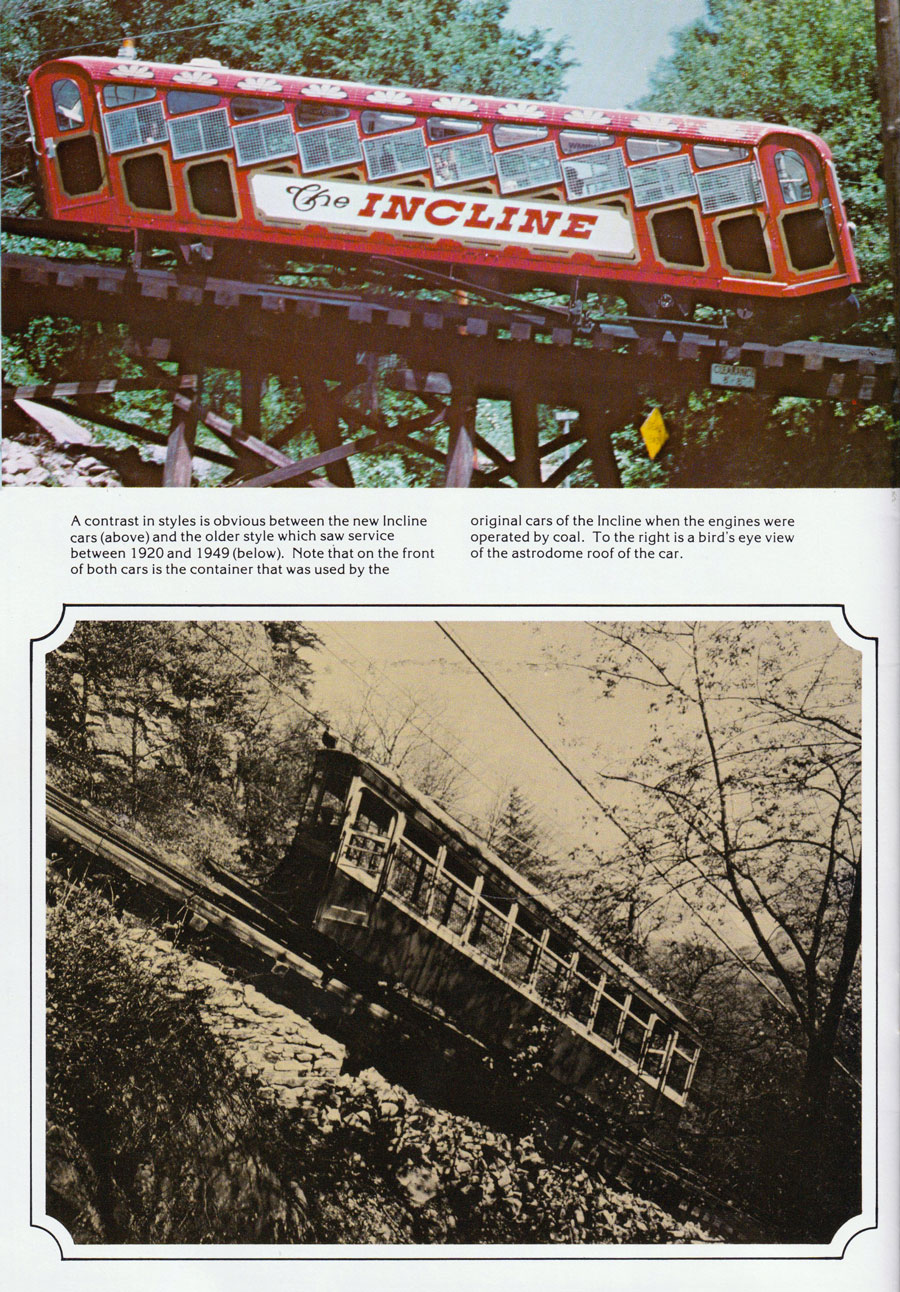
from History of the Lookout Mountain Incline Railway / collection

Chattanooga, Tn / Aug 1986 / JCH

Chattanooga, Tn / Aug 1986 / JCH

Chattanooga, Tn / Aug 1986 / JCH
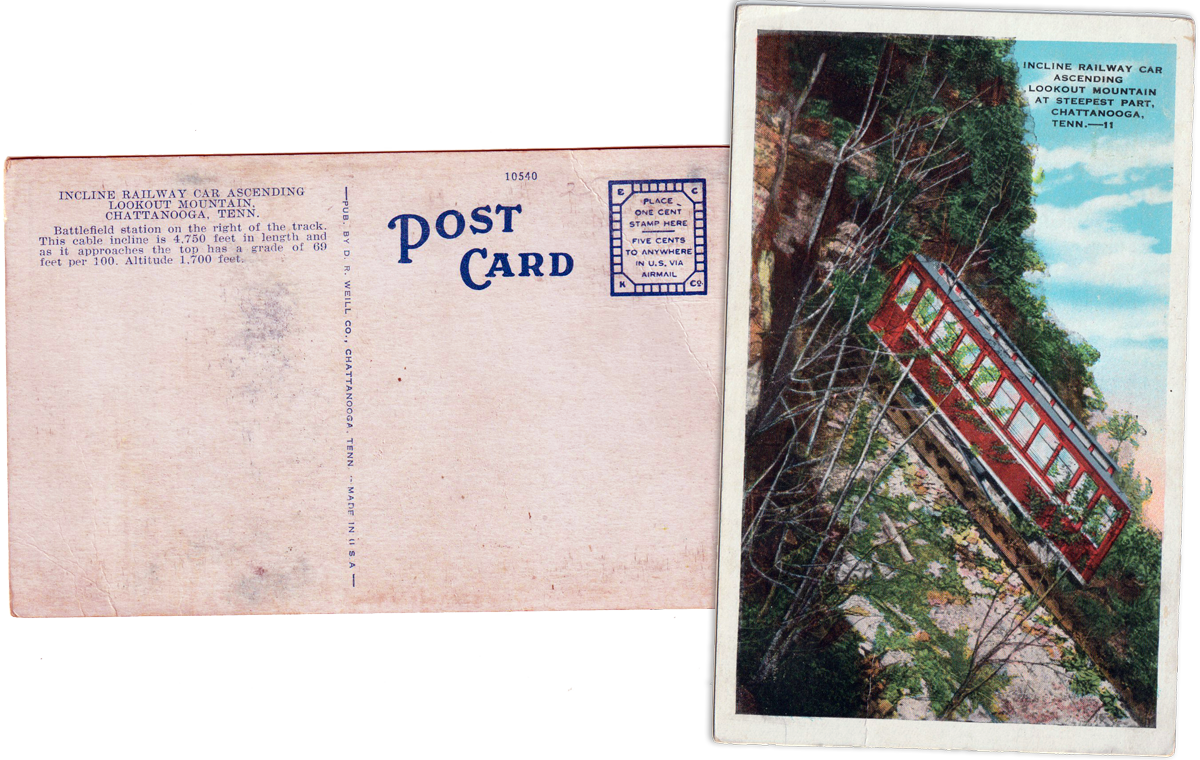
postcard / collection

postcard / collection
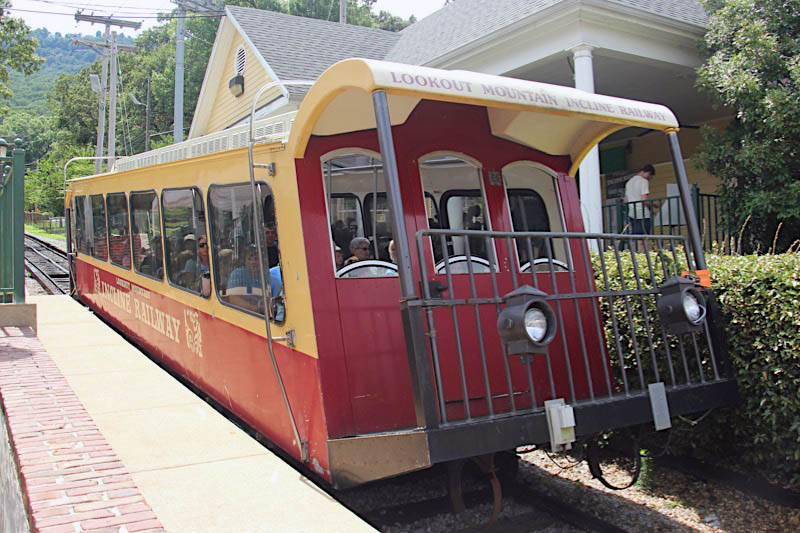
Chattanooga, Tn / Jun 2019 / RWH
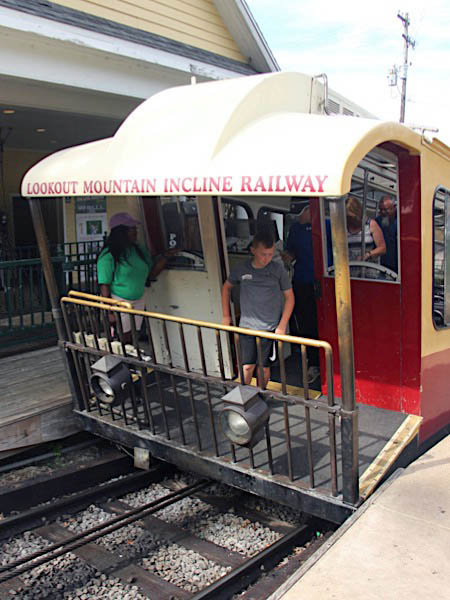
Chattanooga, Tn / Jun 2019 / RWH
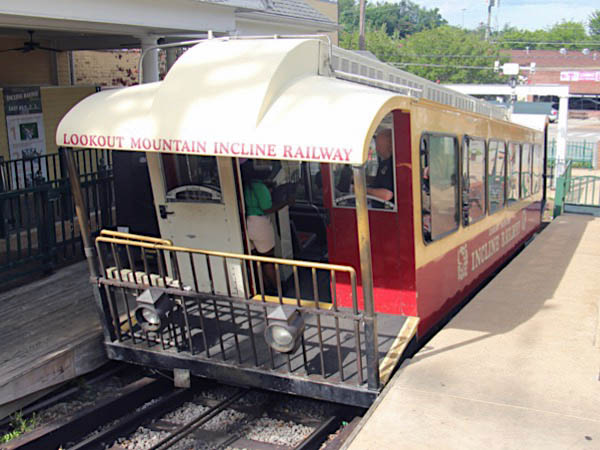
Chattanooga, Tn / Jun 2019 / RWH
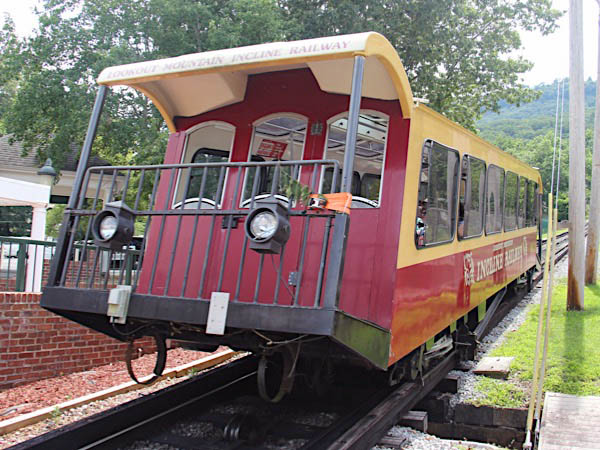
Chattanooga, Tn / Jun 2019 / RWH
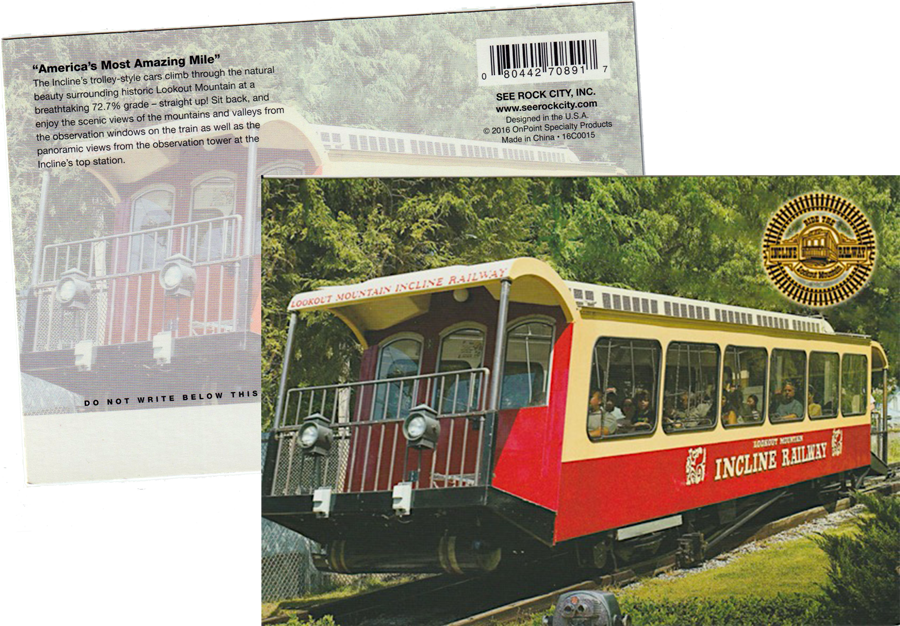
postcard / collection
Locations
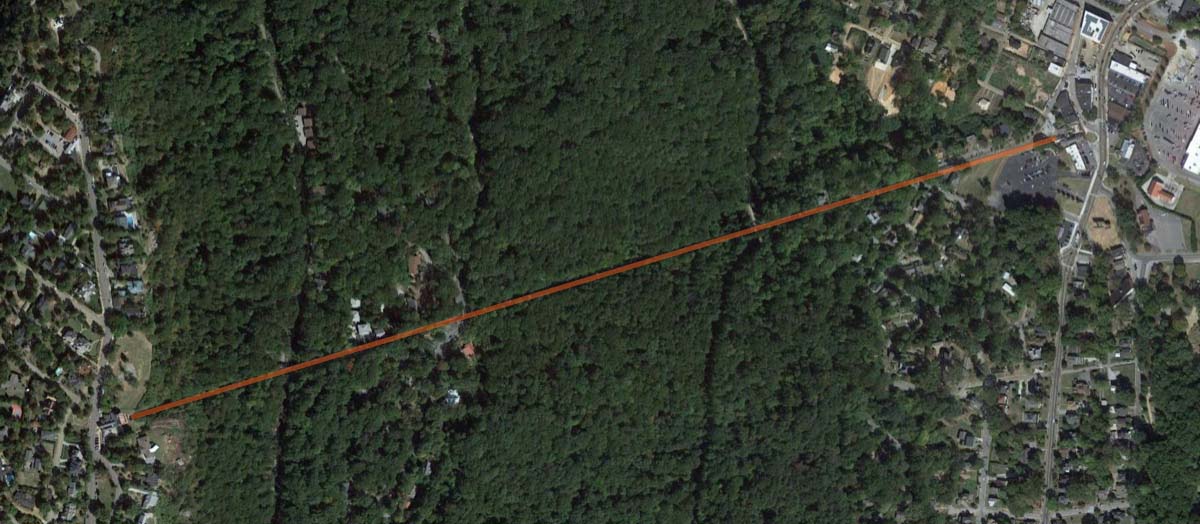
Incline overhead view / Google Maps
 Lower Station
Lower Station
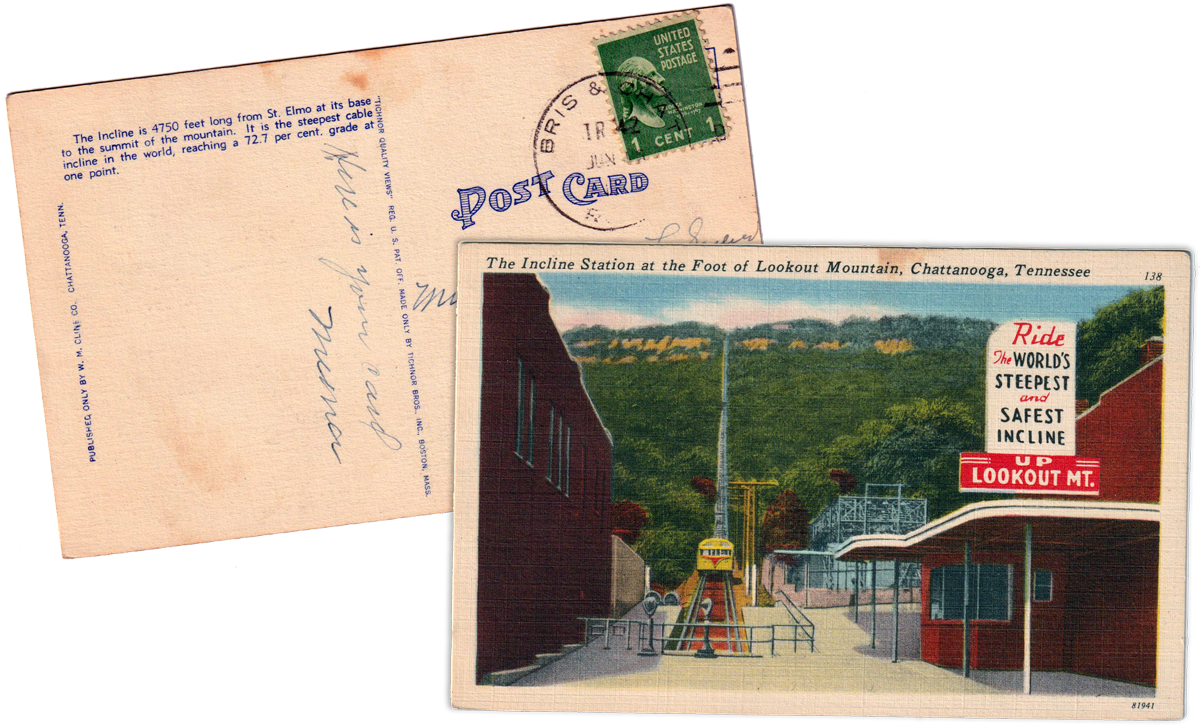
postcard / collection
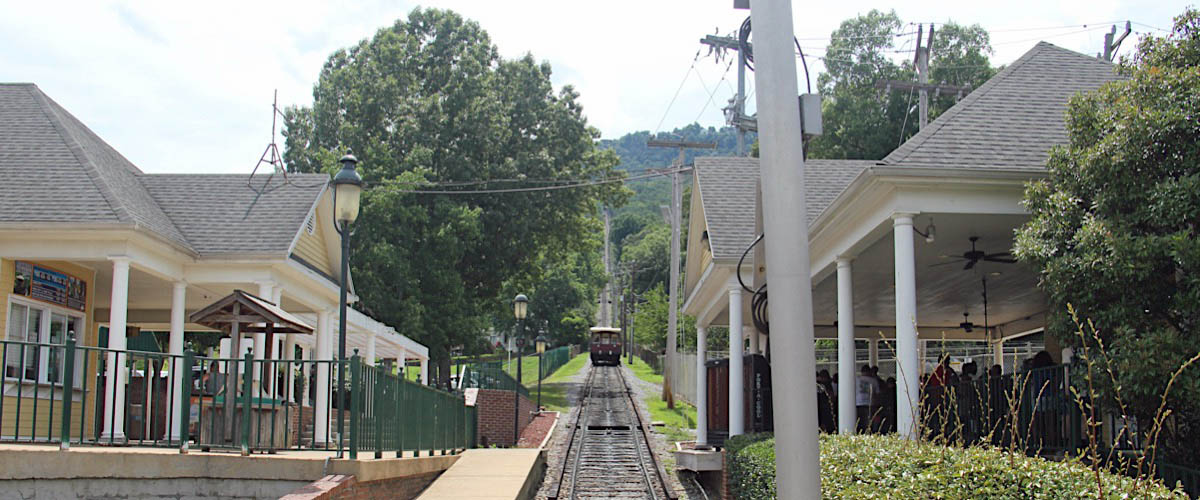
Chattanooga, Tn / Jun 2019 / RWH

Click to see the Lower Station plotted on a Google Maps page
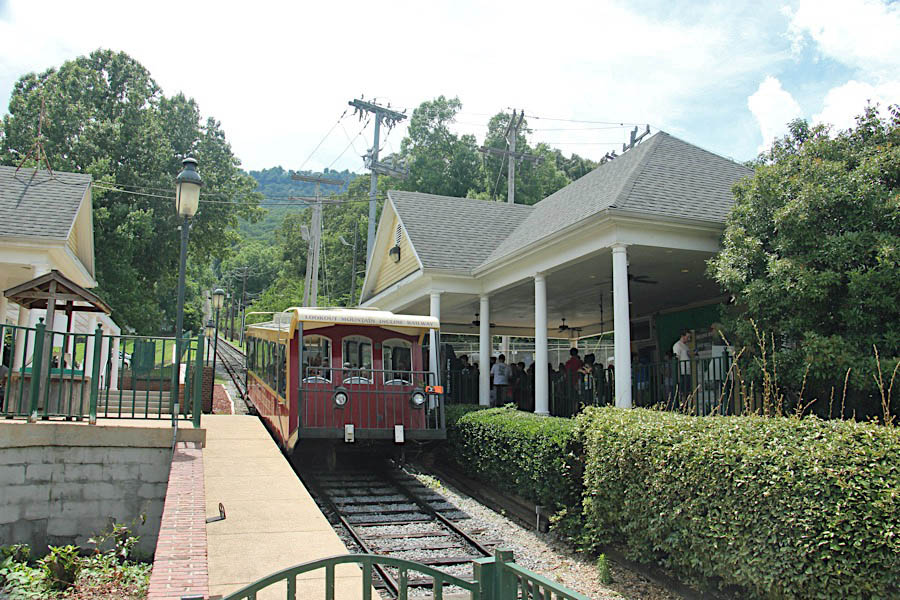
Chattanooga, Tn / Jun 2019 / RWH
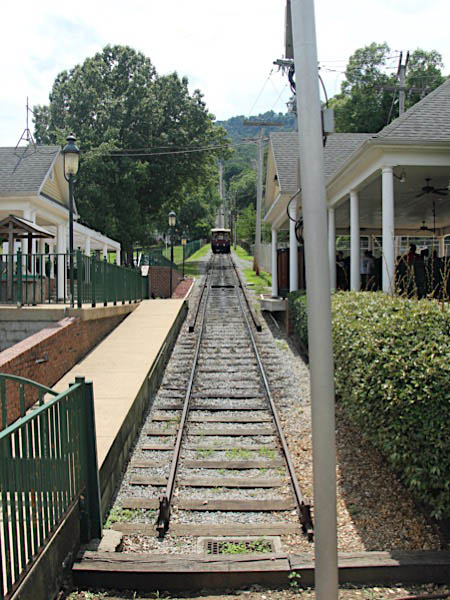
Chattanooga, Tn / Jun 2019 / RWH
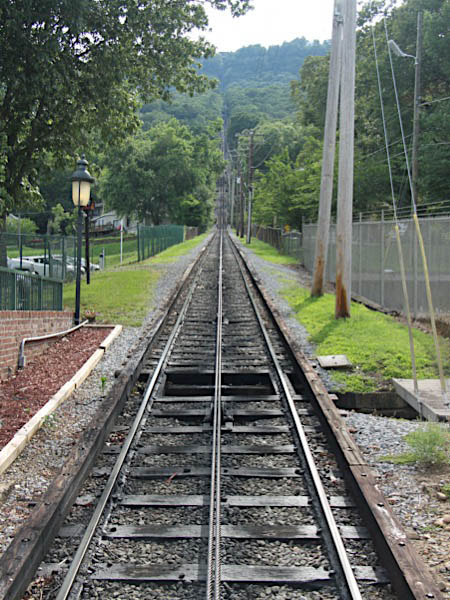
Chattanooga, Tn / Jun 2019 / RWH
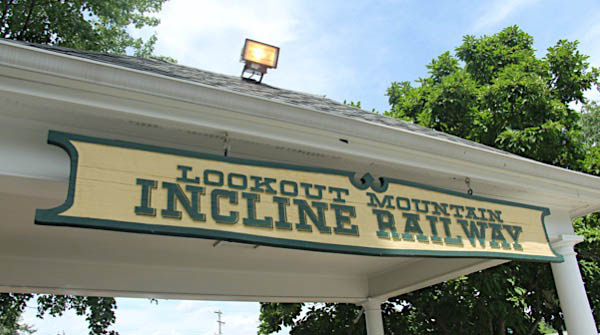
Chattanooga, Tn / Jun 2019 / RWH

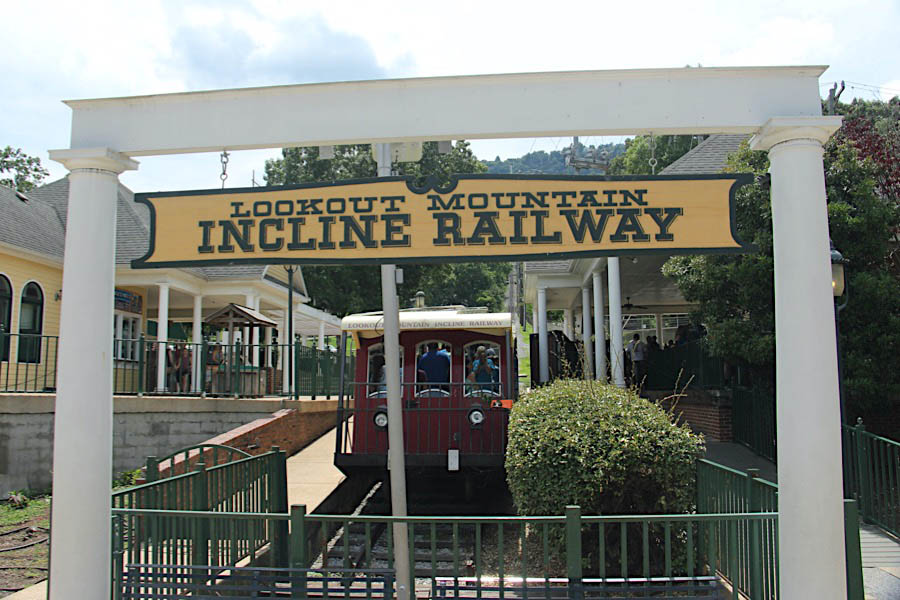
Chattanooga, Tn / Jun 2019 / RWH
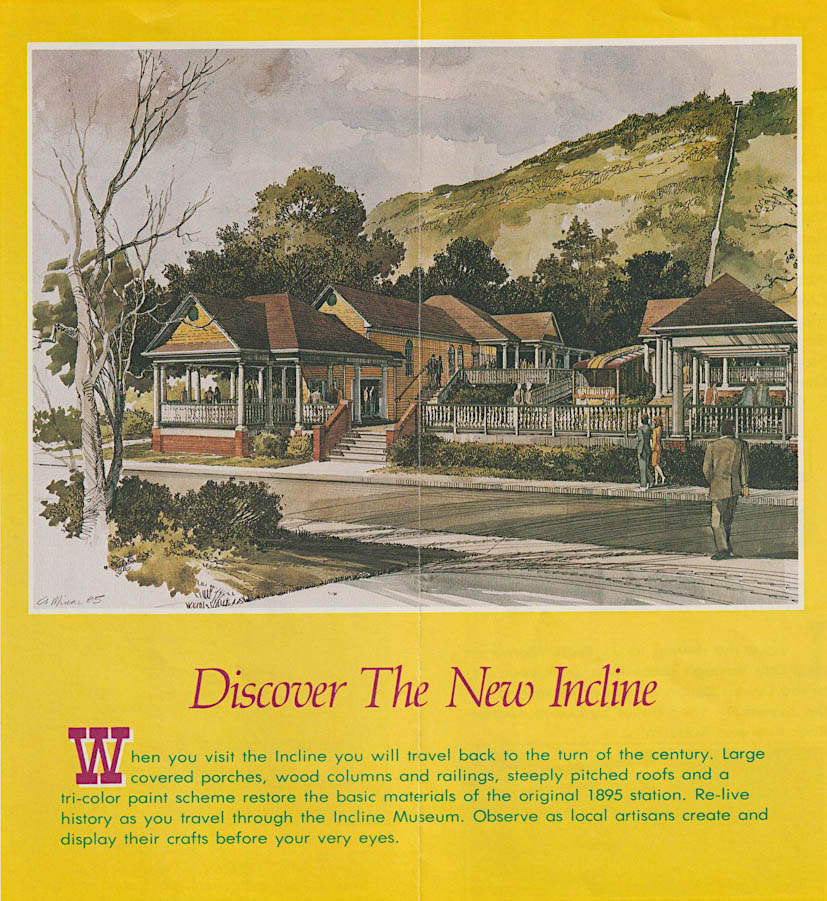
1985 station brochure / collection
 Upper Station
Upper Station
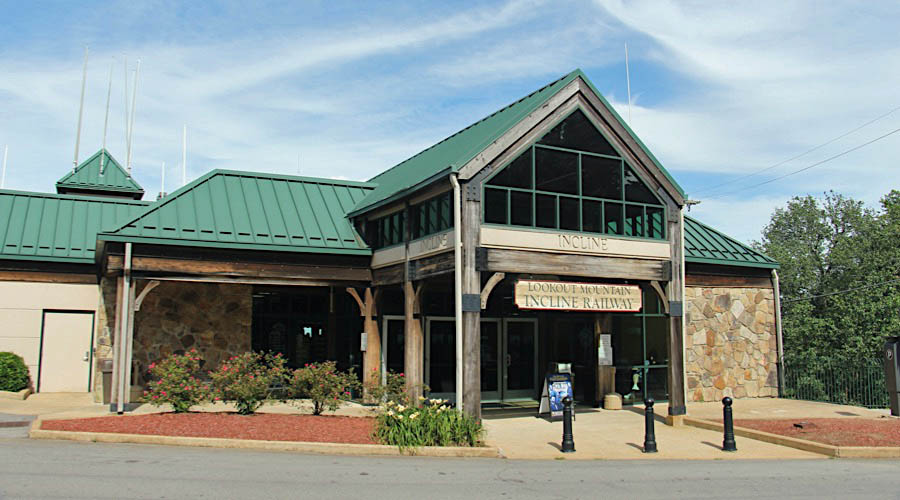
Lookout Mountain, Tn / Jun 2019 / RWH

Click to see the Upper Station plotted on a Google Maps page
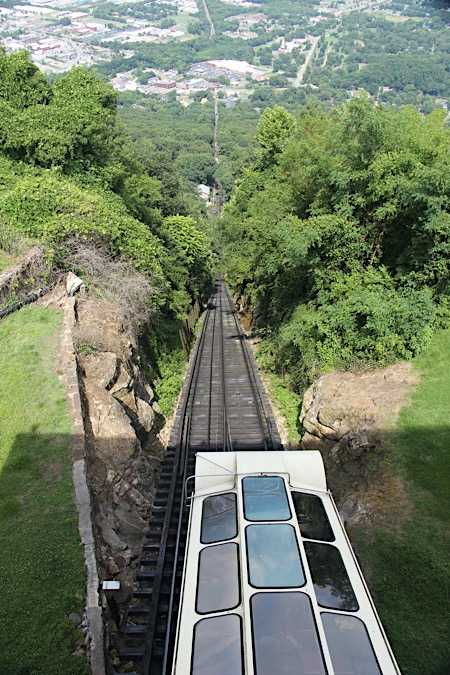
Lookout Mountain, Tn / Jun 2019 / RWH
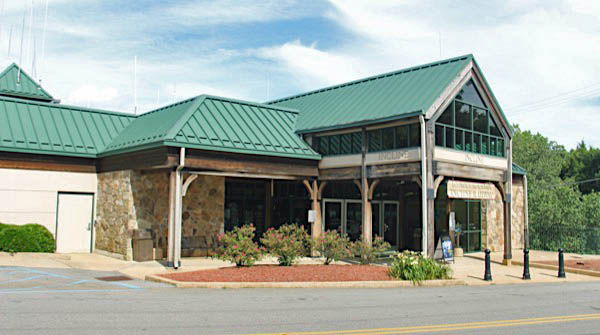
Lookout Mountain, Tn / Jun 2019 / RWH
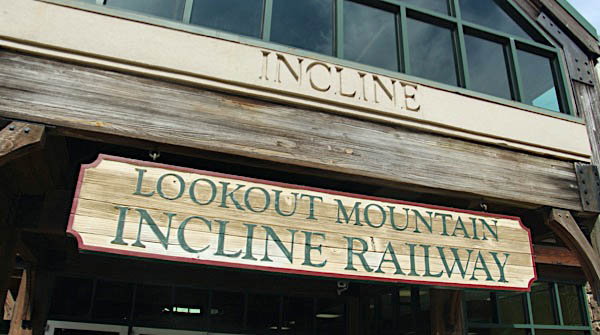
Lookout Mountain, Tn / Jun 2019 / RWH
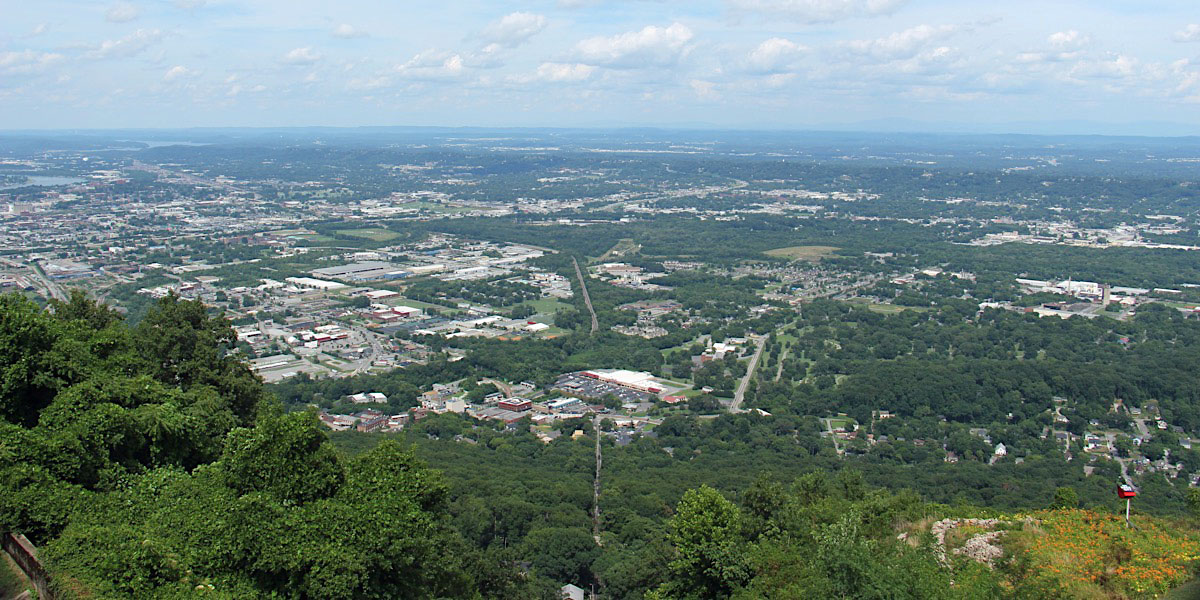
Lookout Mountain, Tn / Jun 2019 / RWH
Ride
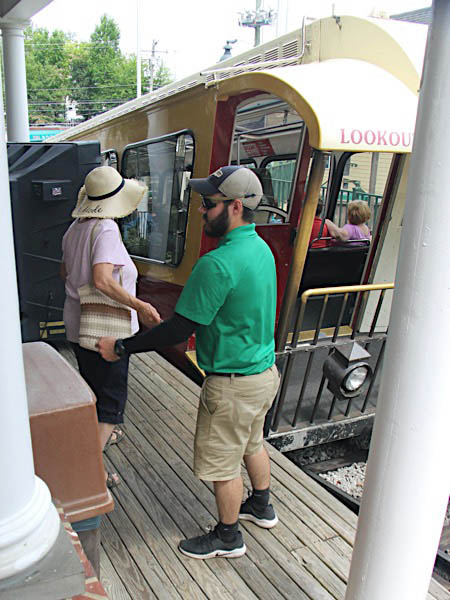

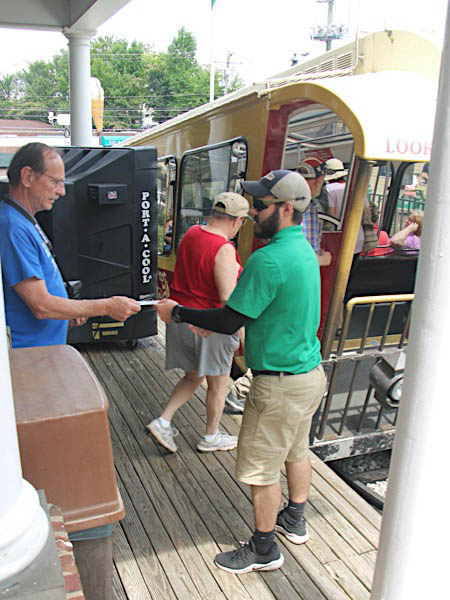
Jun 2019 / RWH

Jun 2019 / RWH

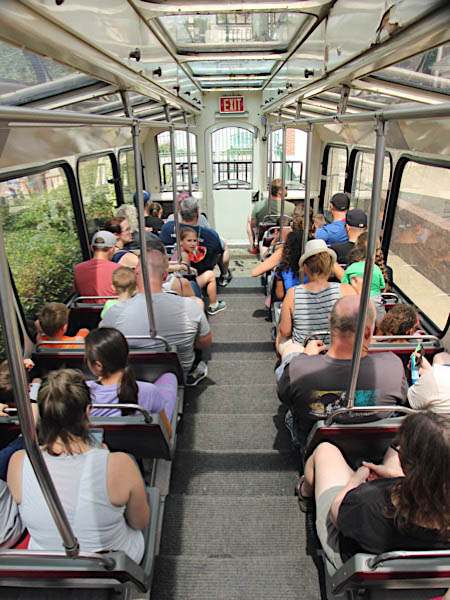
Jun 2019 / RWH

Jun 2019 / RWH

Jun 2019 / RWH
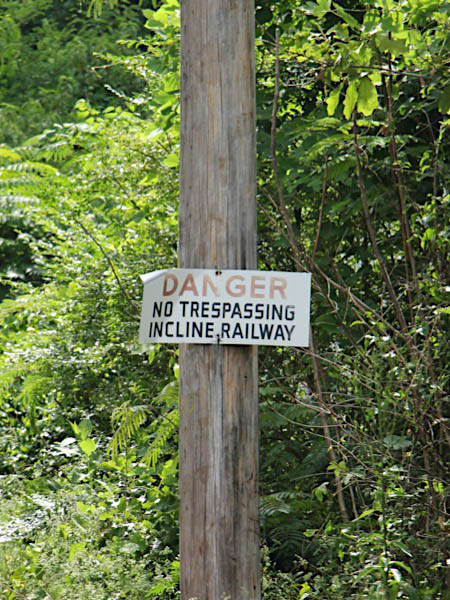
RWH
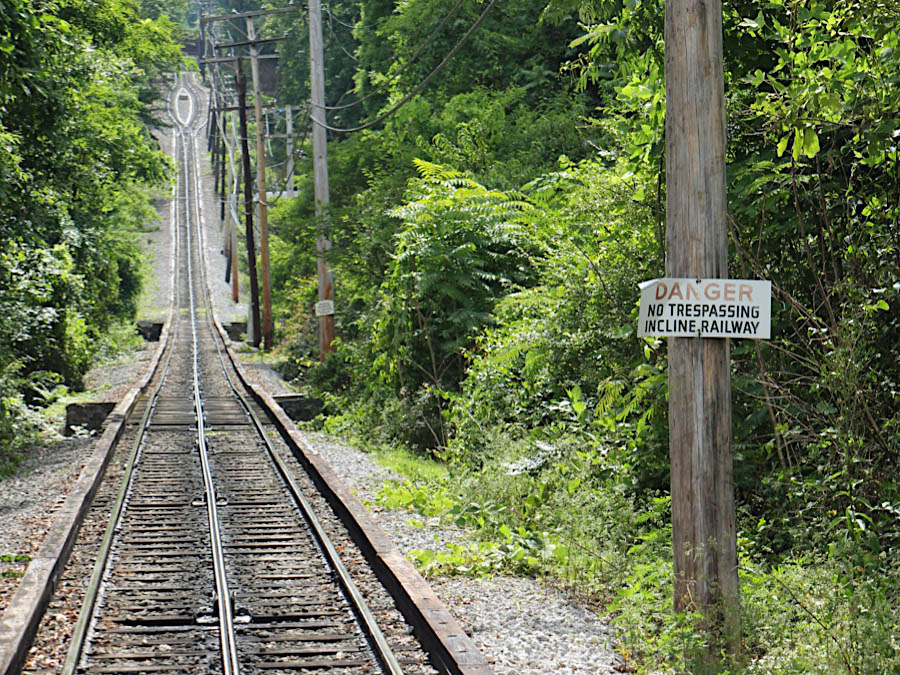
Jun 2019 / RWH
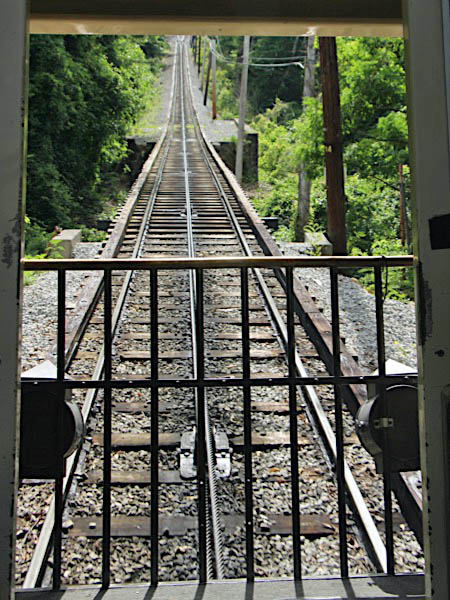
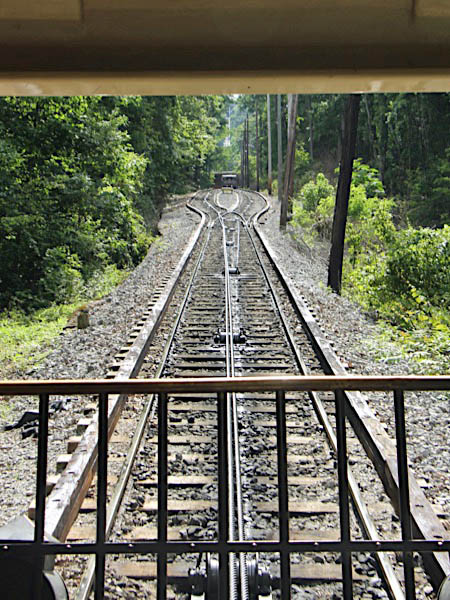
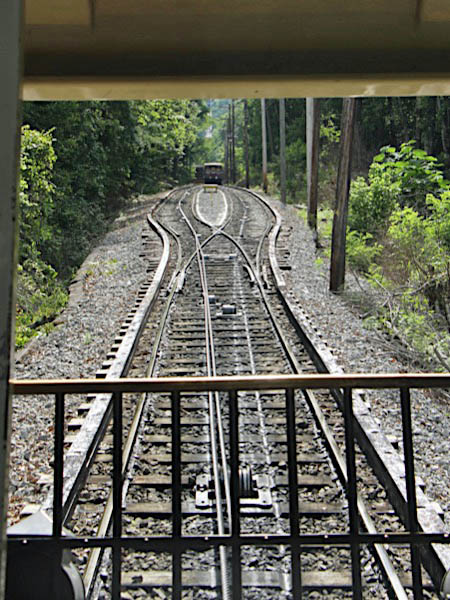
Jun 2019 / RWH
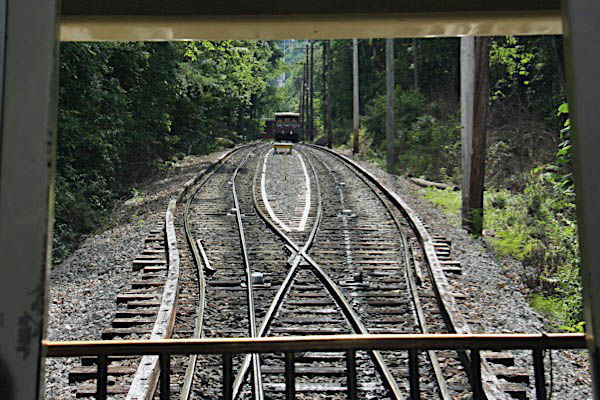
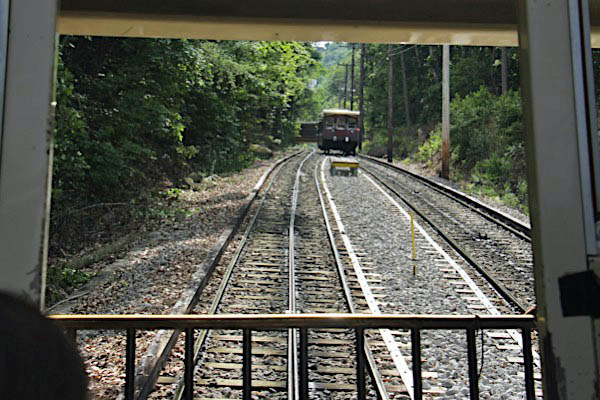
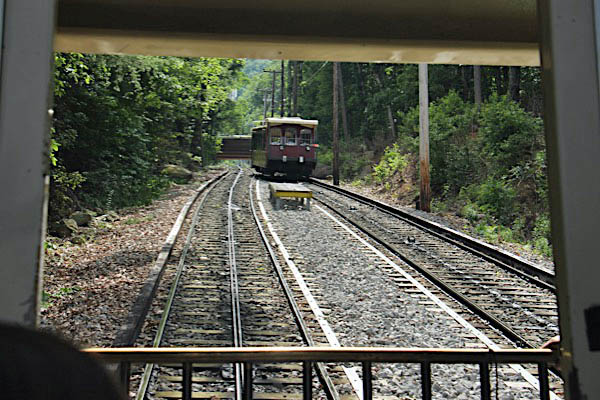
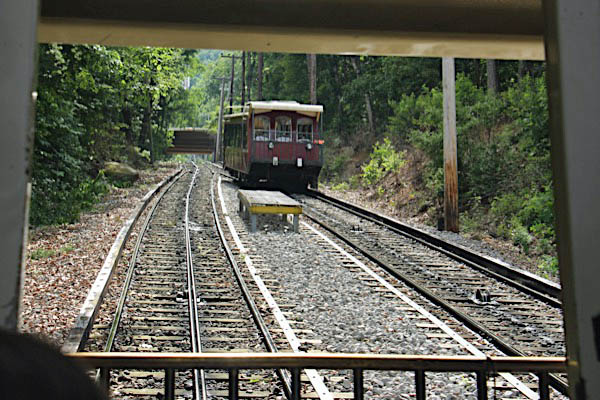
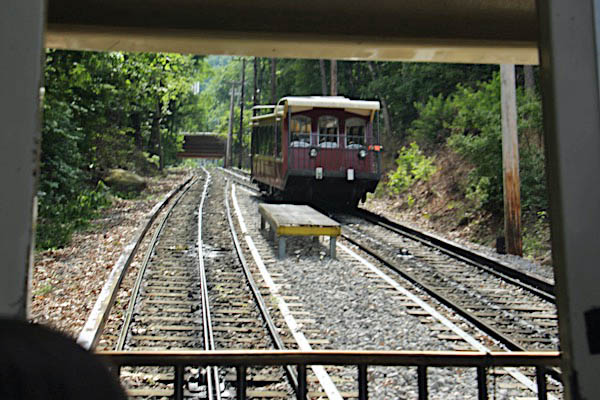
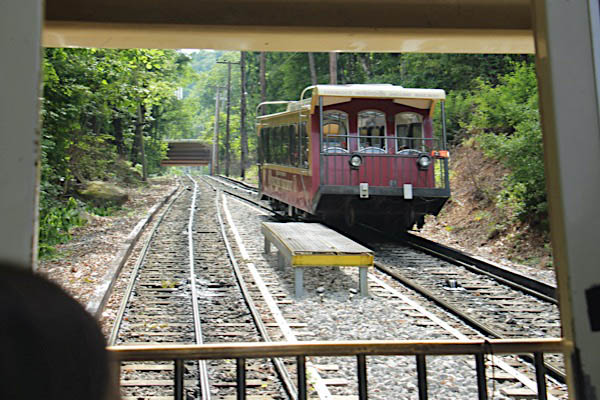
Jun 2019 / RWH
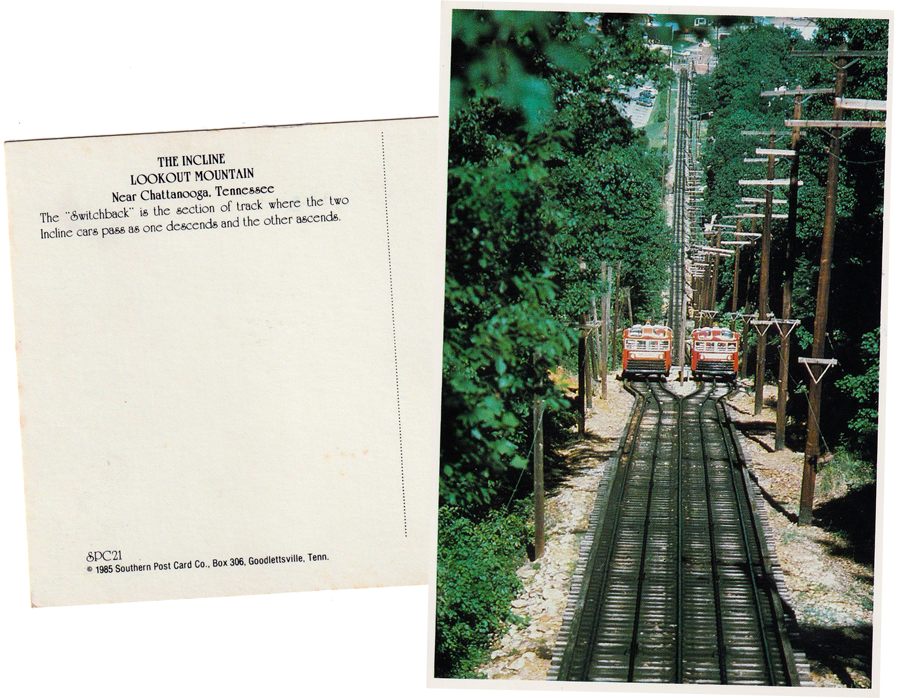
postcard / collection

RWH
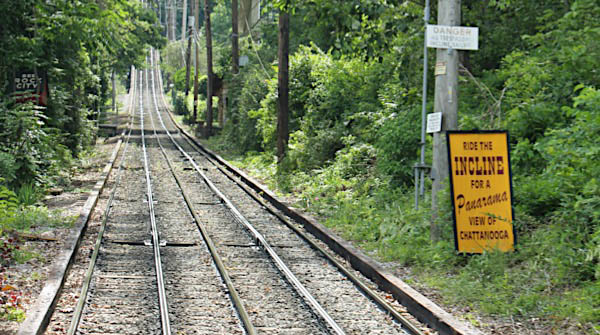
Jun 2019 / RWH
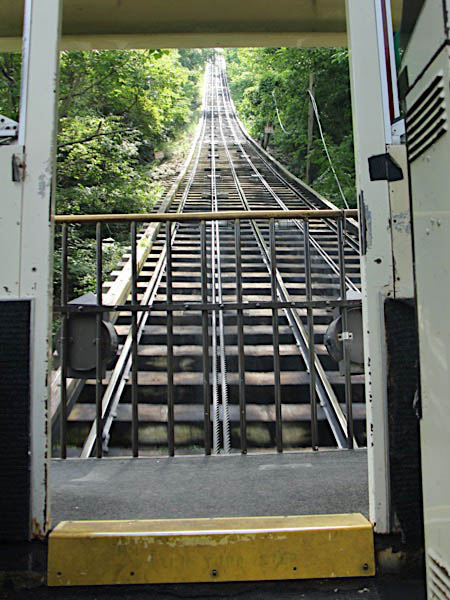
Jun 2019 / RWH

Jun 2019 / RWH
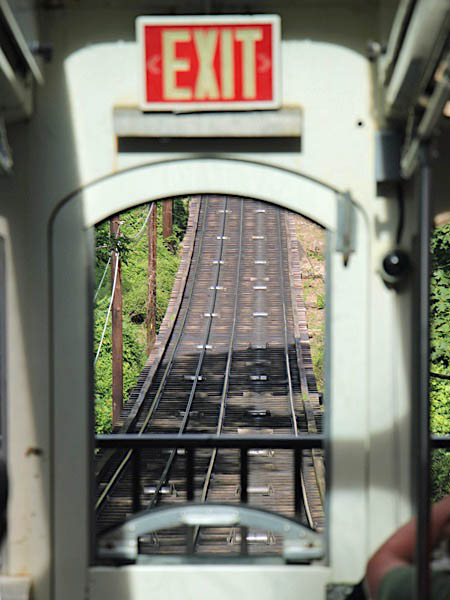
Jun 2019 / RWH
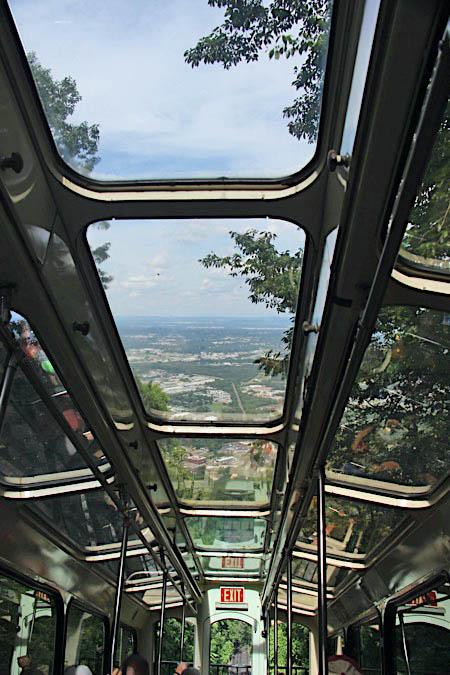
Jun 2019 / RWH

Jun 2019 / RWH
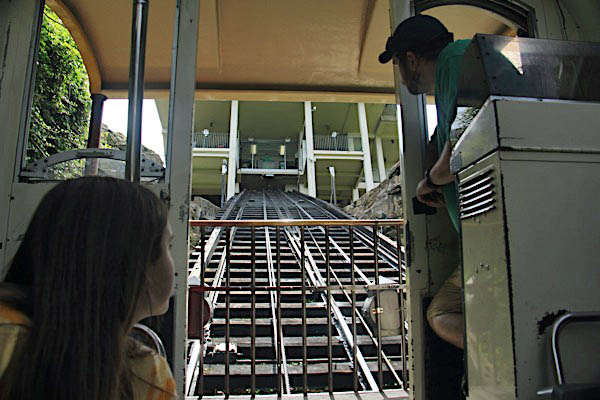
Jun 2019 / RWH

postcard / collection
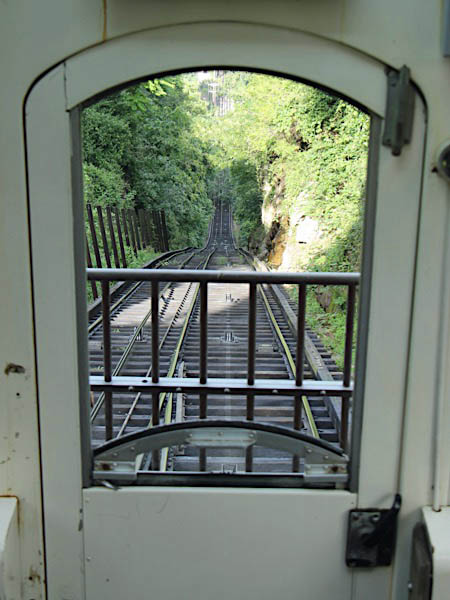
Jun 2019 / RWH
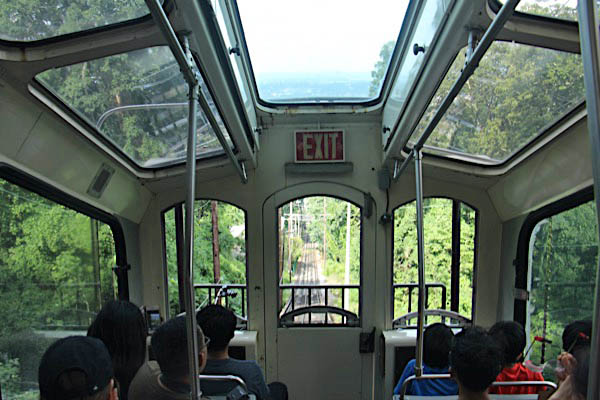
Jun 2019 / RWH
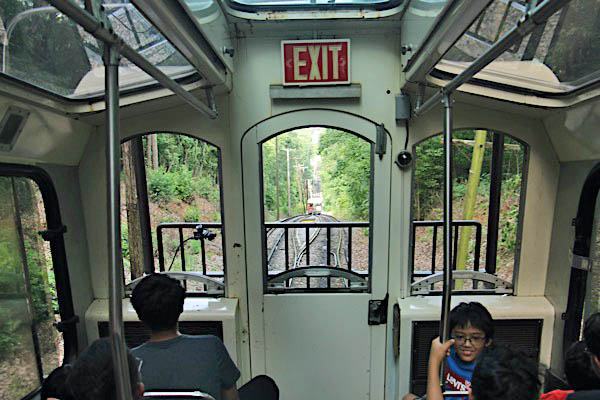
Jun 2019 / RWH
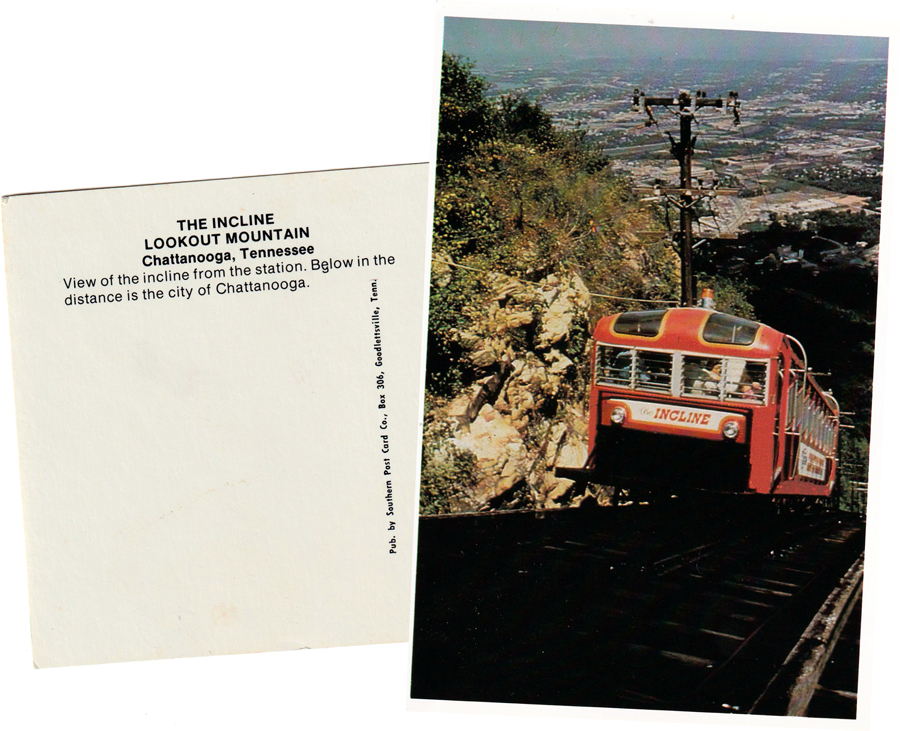
postcard / collection
Publications
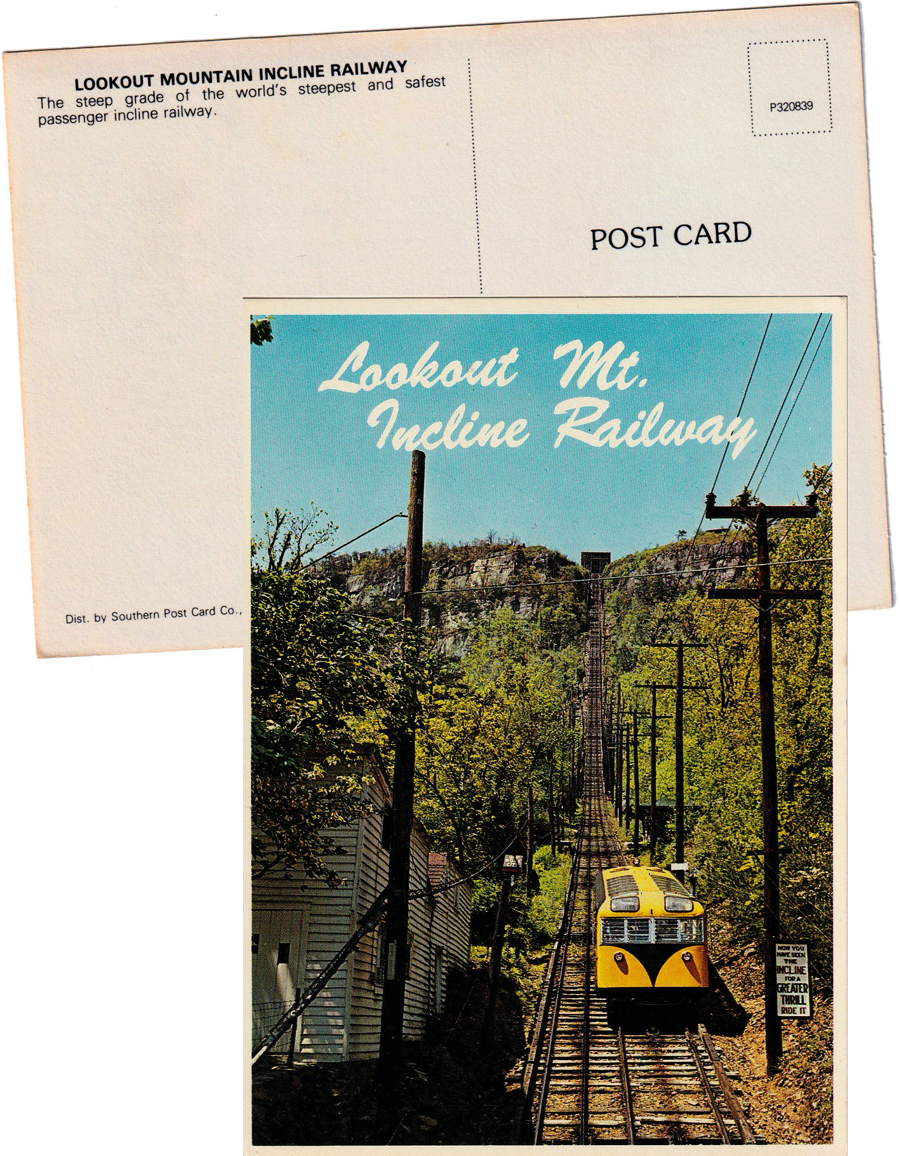
postcard / collection
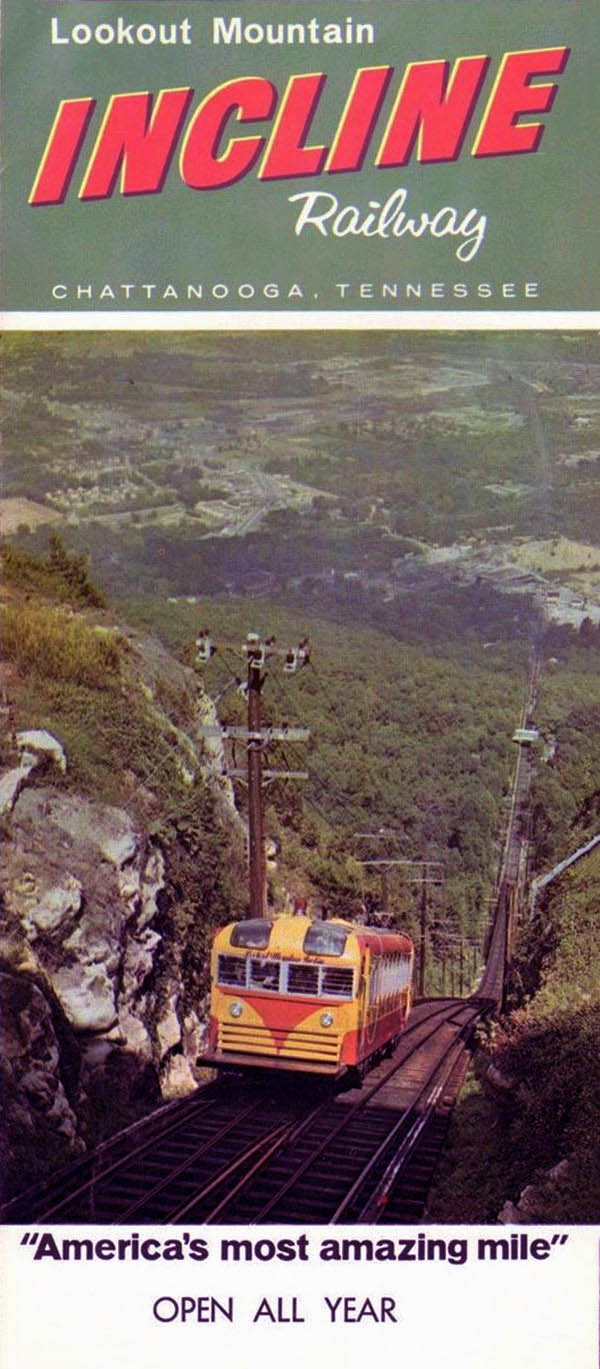
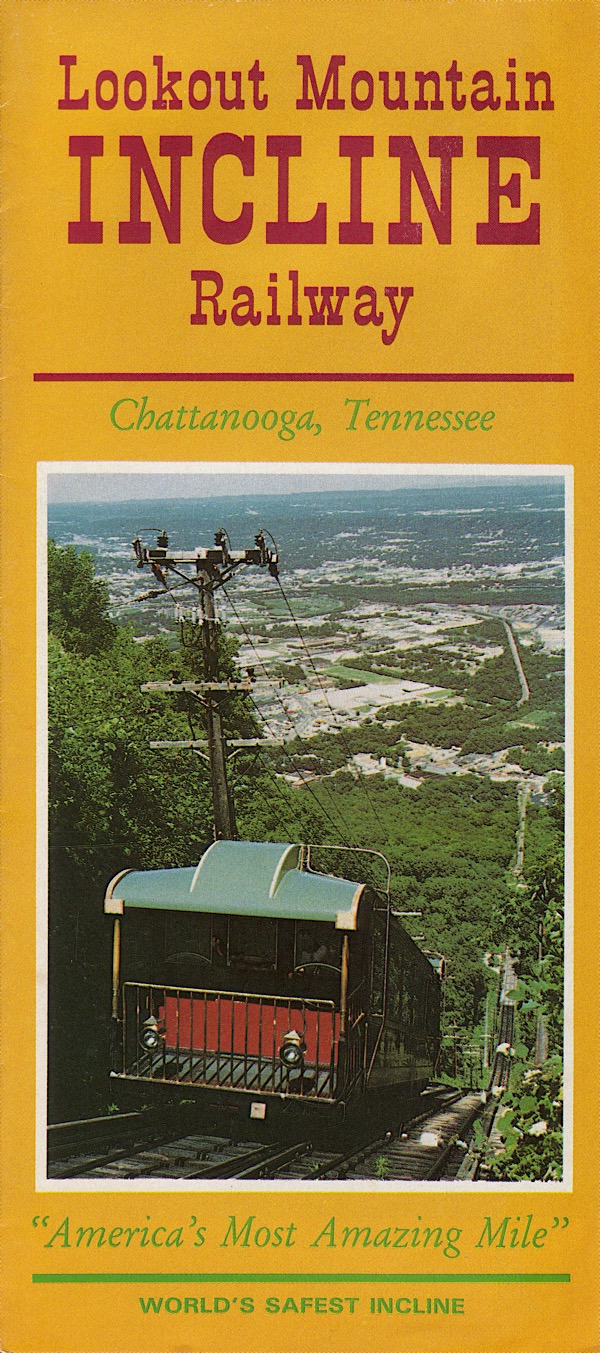

1985 brochure / collection
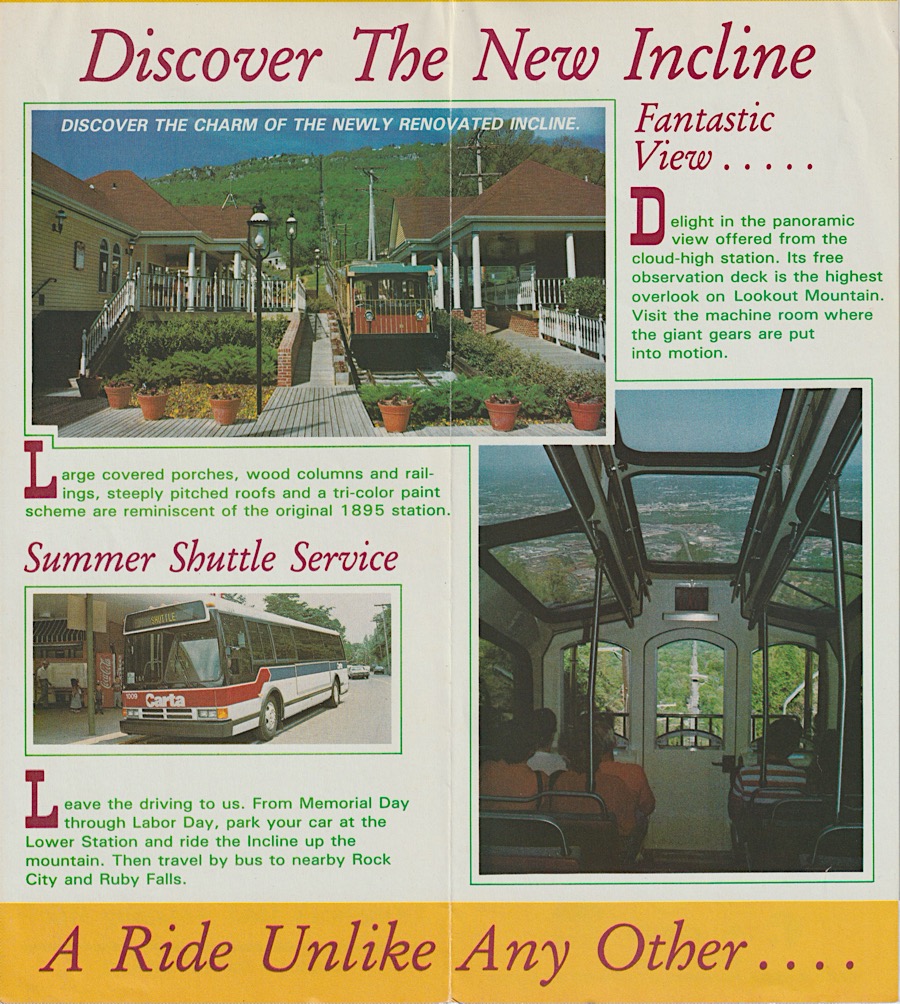
1986 brochure / collection
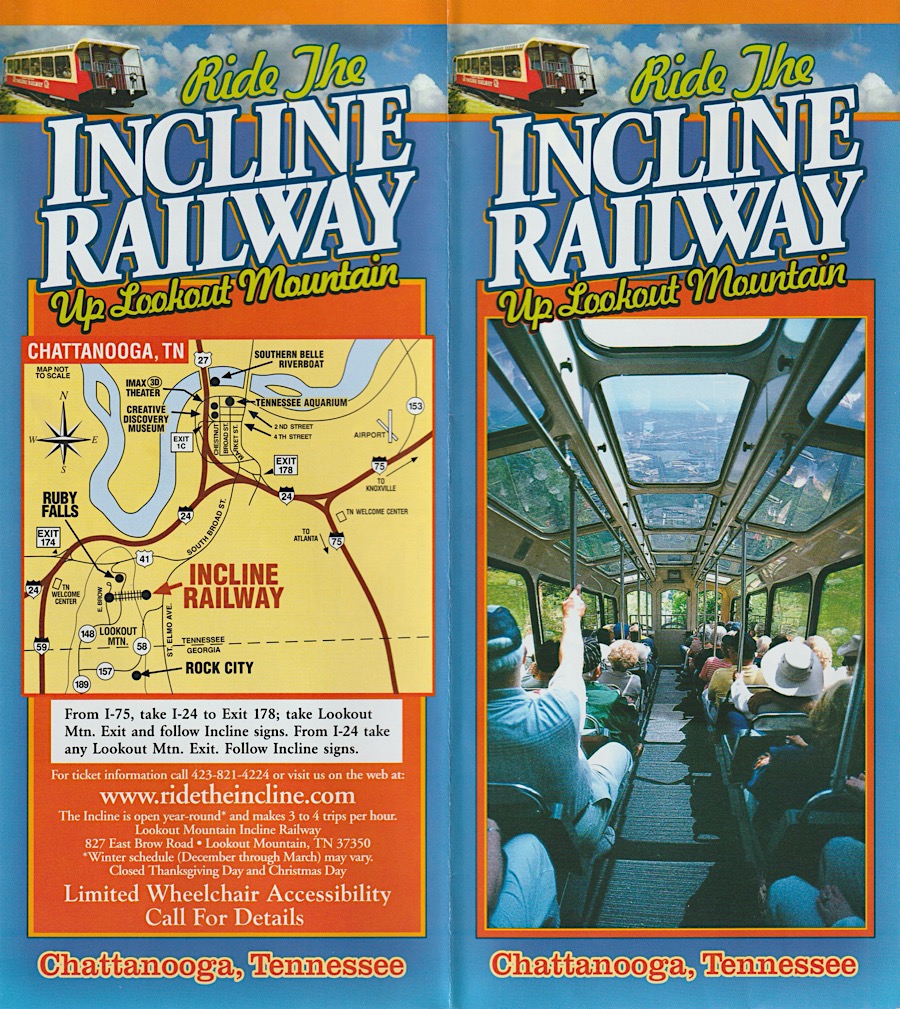
2019 brochure / collection
 Point Park
Point Park

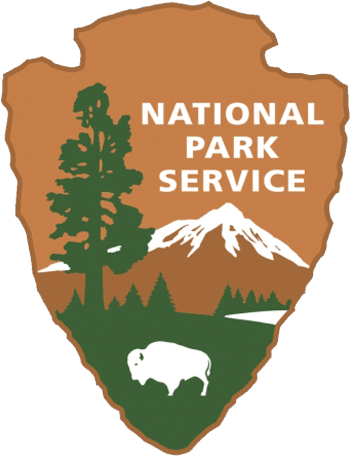 Point Park is a ten acre memorial park that overlooks the Lookout Mountain Battlefield and the city of Chattanooga. There is a paved walking path around the park that takes visitors by several historic tablets, monuments. Confederate artillery positions, and scenic overlook. The largest monuments in Point Park is the New York Peace Memorial, which was erected by the state of New York as a tribute to peace and reconciliation between Union and Confederate veterans after the war. Inside Point Park, at the point of the mountain, is the Ochs Memorial Observatory.
Point Park is a ten acre memorial park that overlooks the Lookout Mountain Battlefield and the city of Chattanooga. There is a paved walking path around the park that takes visitors by several historic tablets, monuments. Confederate artillery positions, and scenic overlook. The largest monuments in Point Park is the New York Peace Memorial, which was erected by the state of New York as a tribute to peace and reconciliation between Union and Confederate veterans after the war. Inside Point Park, at the point of the mountain, is the Ochs Memorial Observatory.

Jun 2019 / RWH
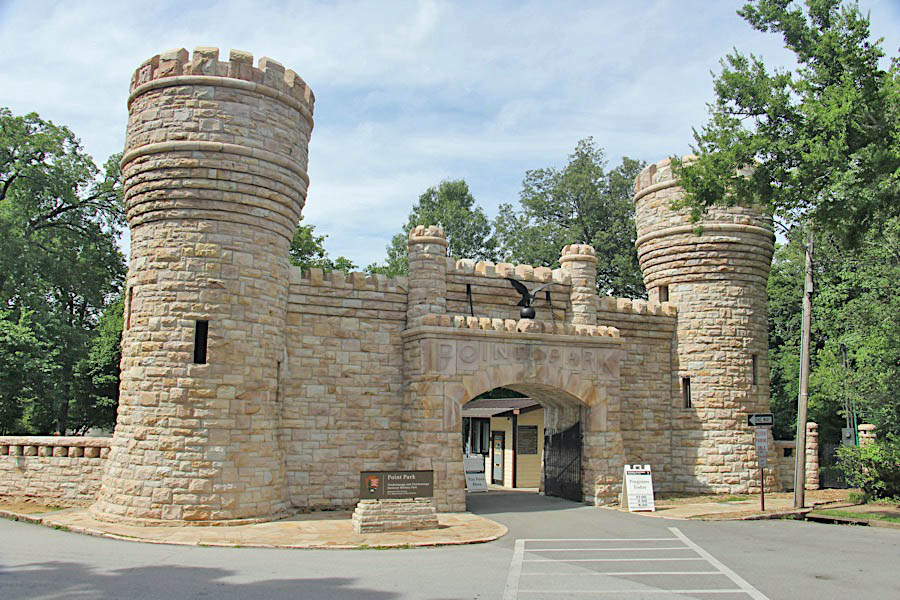
Lookout Mountain, Ga / Jun 2019 / RWH

Click to see Point Park plotted on a Google Maps page
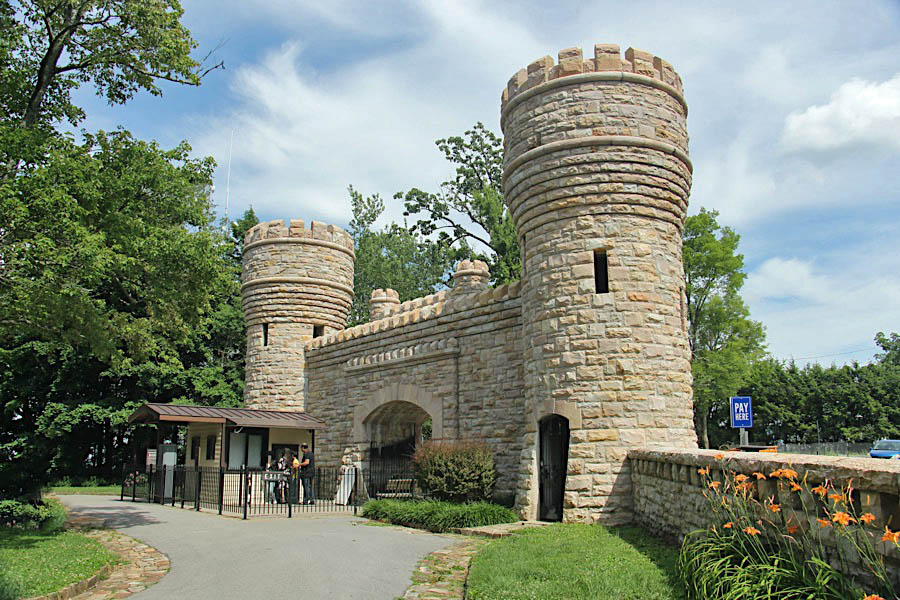
Lookout Mountain, Ga / Jun 2019 / RWH
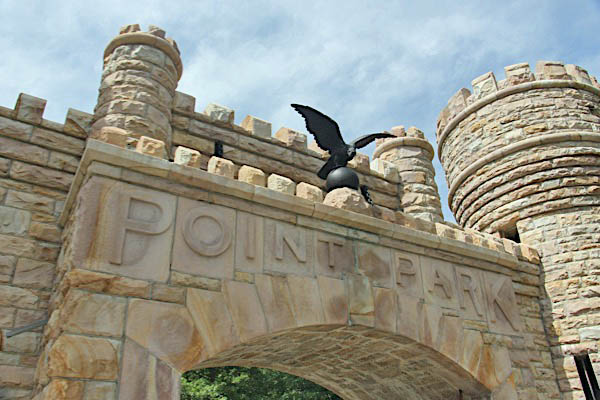
Lookout Mountain, Ga / Jun 2019 / RWH
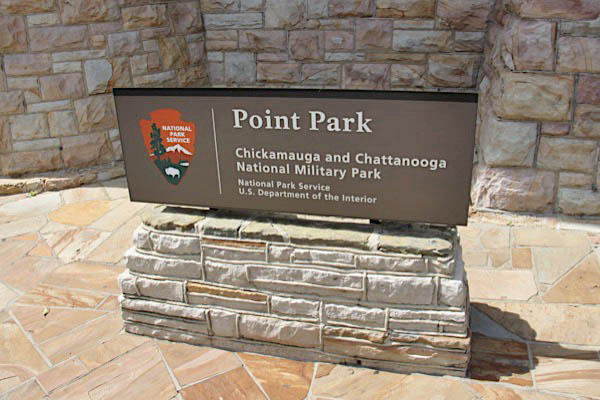
Lookout Mountain, Ga / Jun 2019 / RWH

Lookout Mountain, Ga / Jun 2019 / RWH

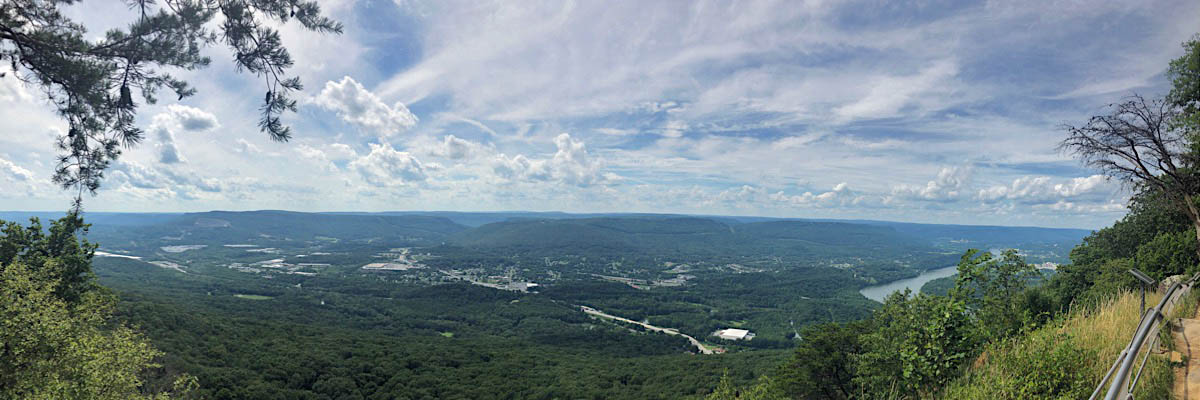
Lookout Mountain, Ga / Jun 2019 / RWH
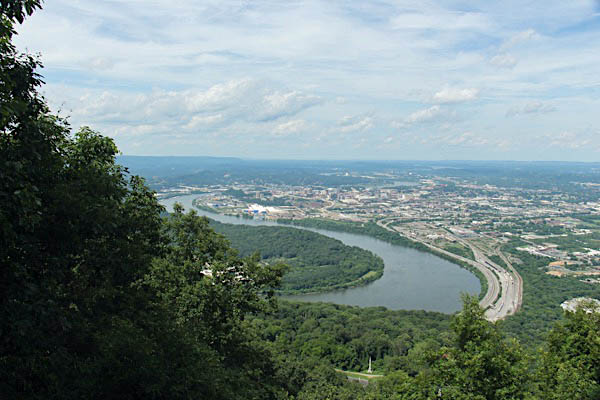

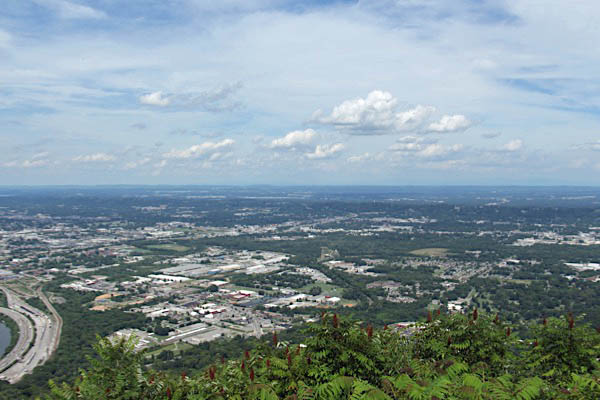
Lookout Mountain, Ga / Jun 2019 / RWH
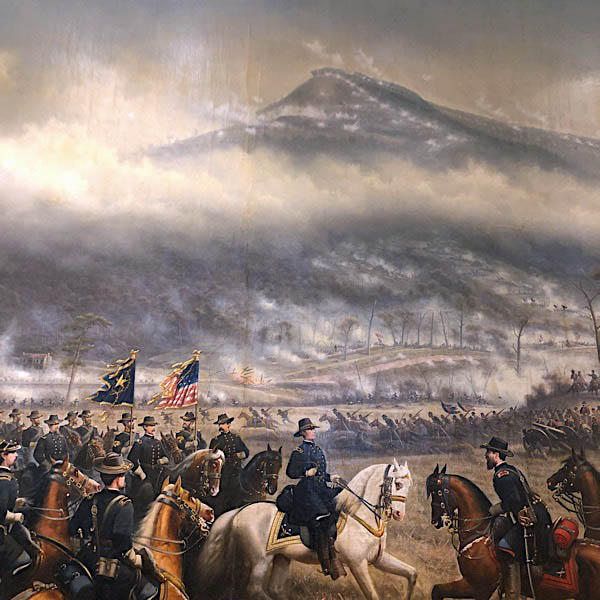
RWH

Lookout Mountain, Ga / Jun 2019 / RWH

Lookout Mountain, Ga / Jun 2019 / RWH

Lookout Mountain, Ga / Jun 2019 / RWH
Lagniappe





collection
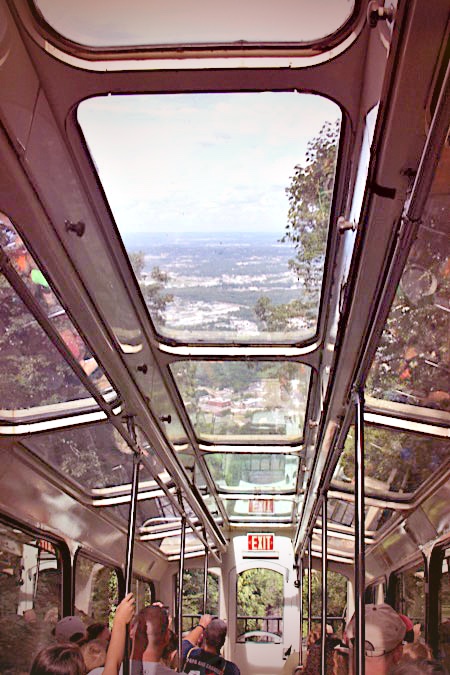
Through the Looking Glass
Jun 2019 / RWH

Worth the Ride Up
Jun 2019 / RWH

Under the Hood
Jun 2019 / RWH
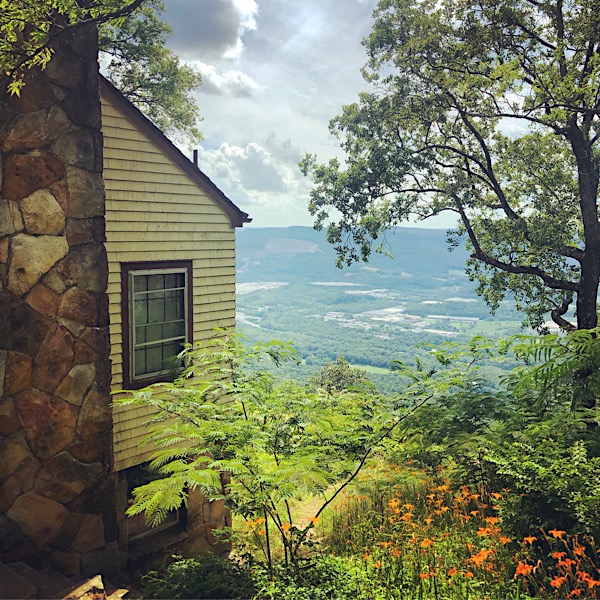
Catch Your Breath
Jun 2019 / RWH
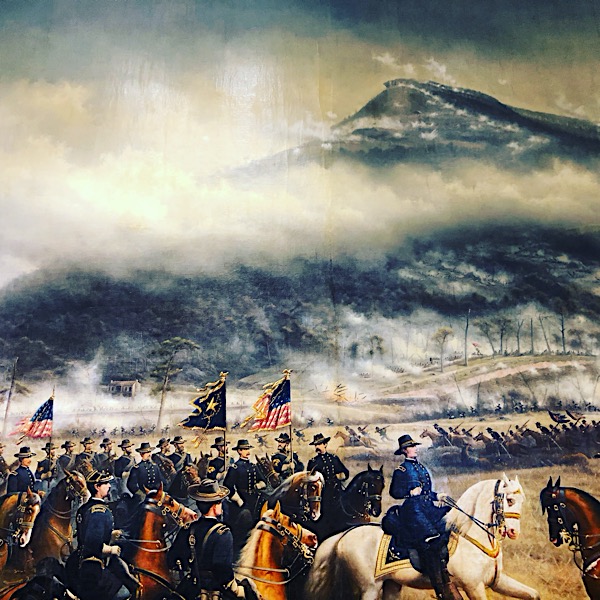
They Have the High Ground
Jun 2019 / RWH

River Bend Blessing
Jun 2019 / RWH
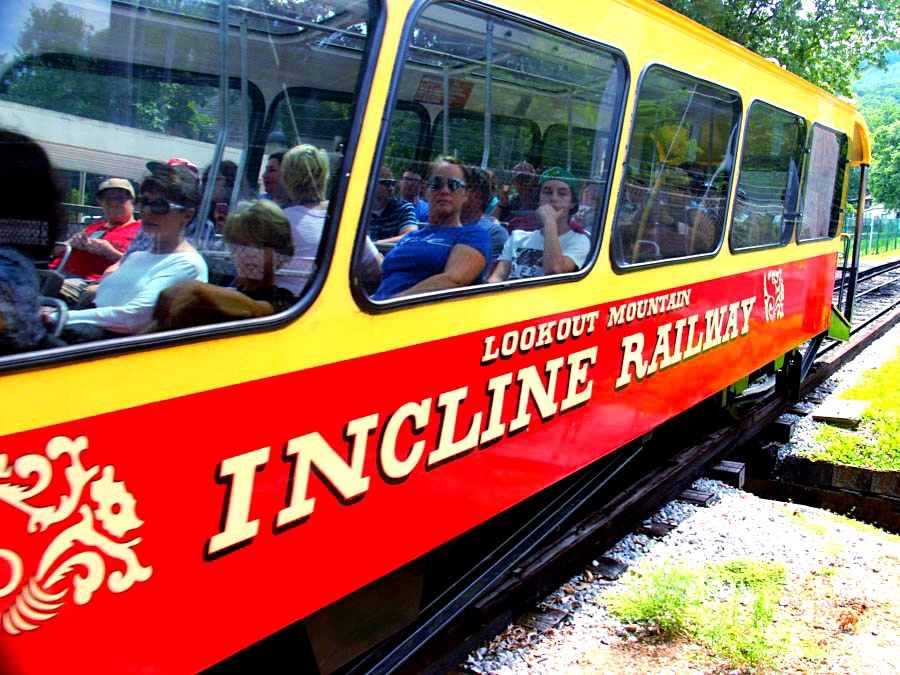
Sit Back and Relax
Jun 2019 / RWH
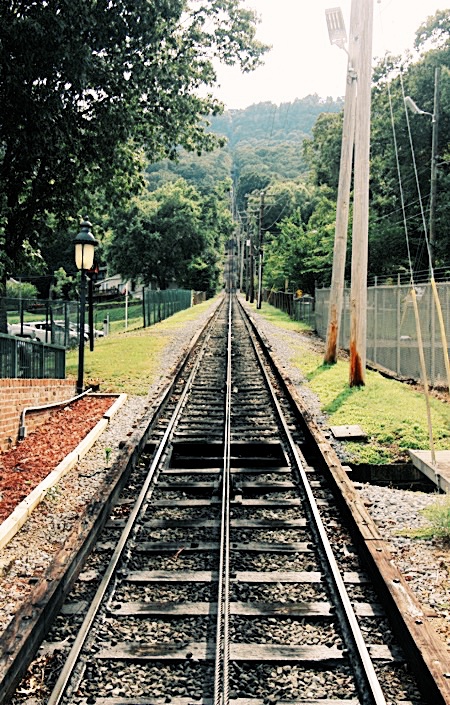
Lift Up Your Eyes to the Hills
Jun 2019 / RWH
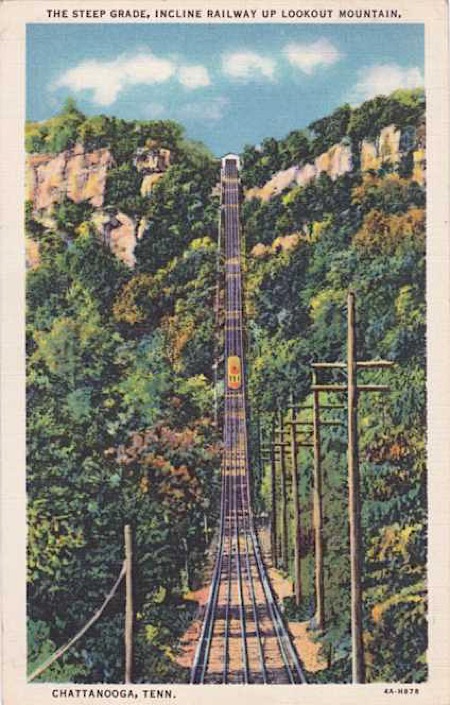
collection
 Snapshots
Snapshots
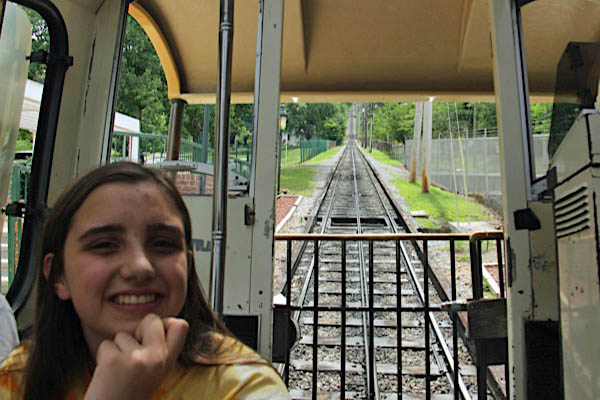

Chattanooga, Tn / Jun 2019 / RWH
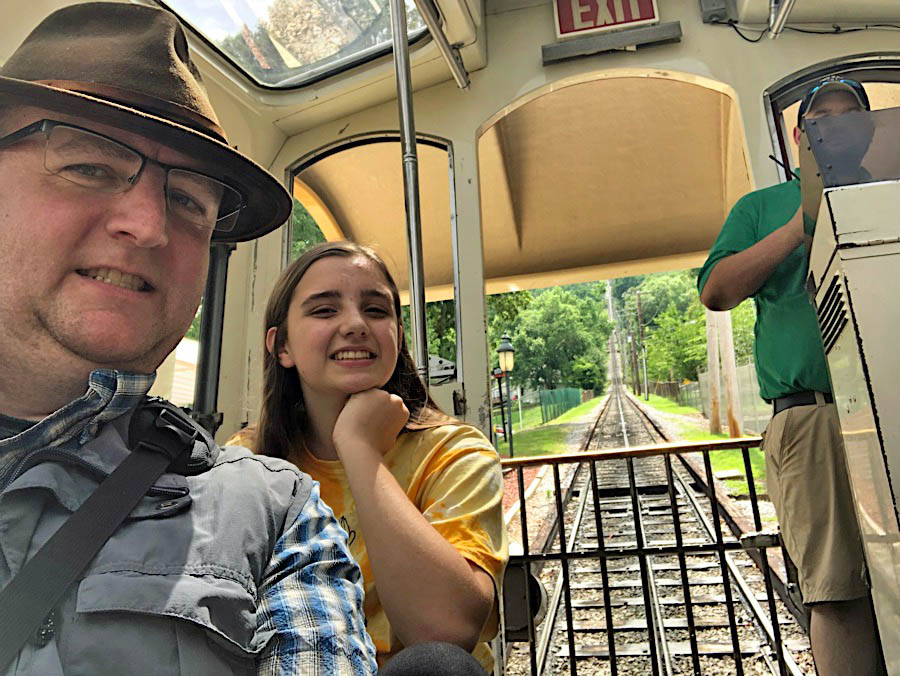
Chattanooga, Tn / Jun 2019 / RWH
Links / Sources
- Lookout Mountain Incline Railway website
- Chattanooga Area Regional Transportation Authority
- Wikipedia article for Incline Railway
- National Park Service Lookout Mountain page

